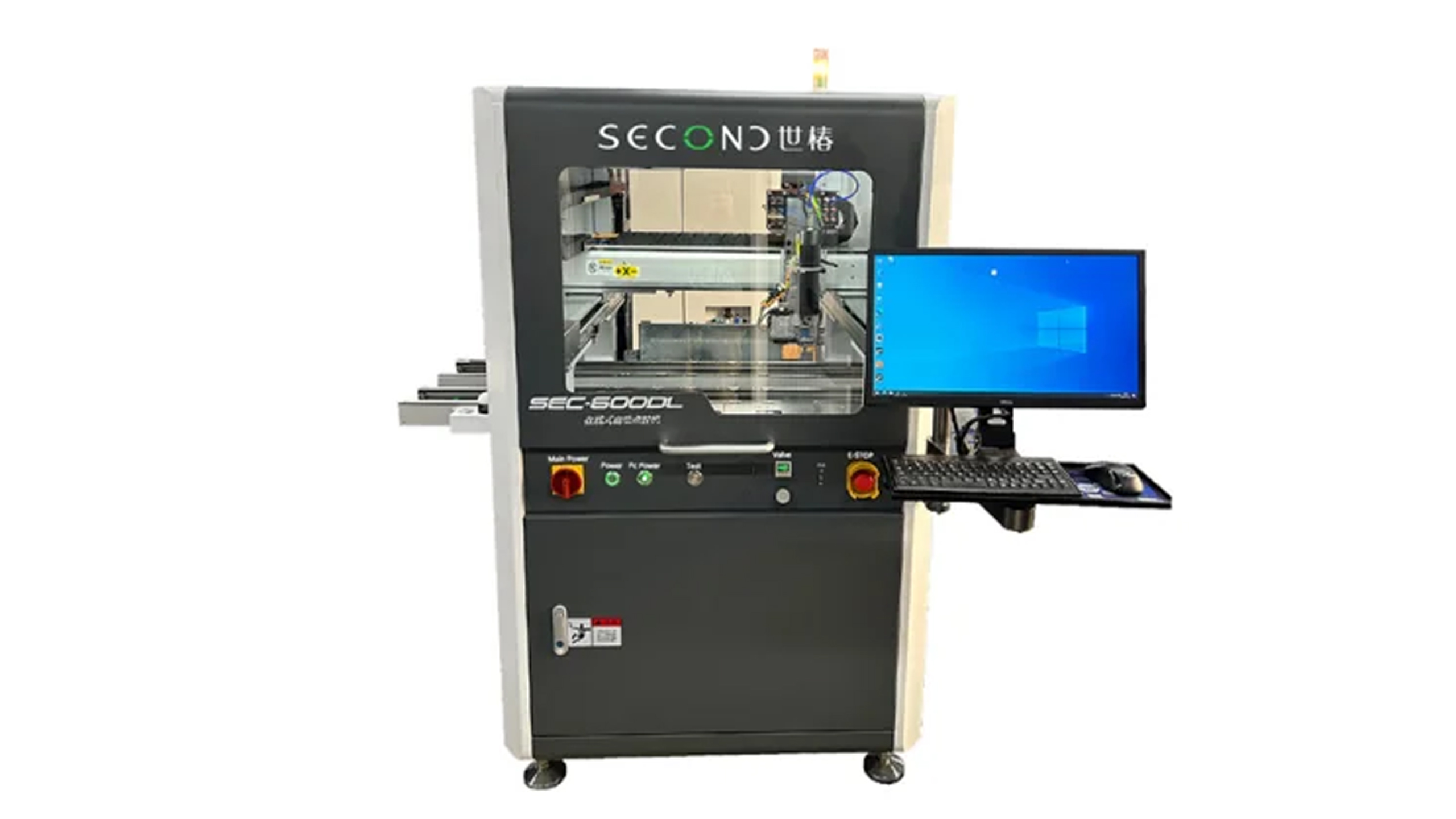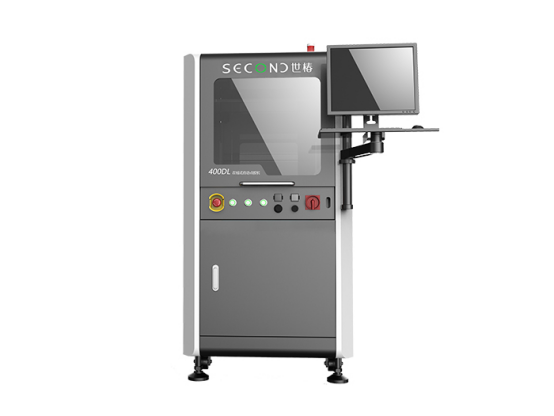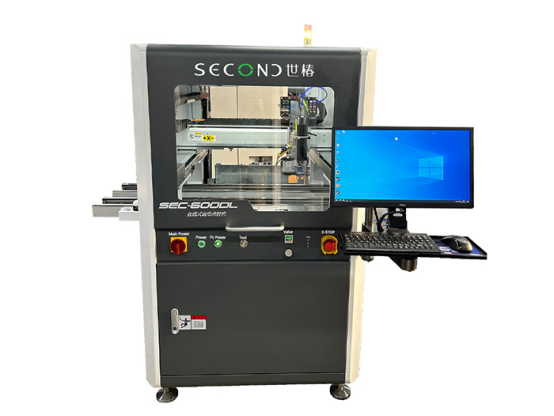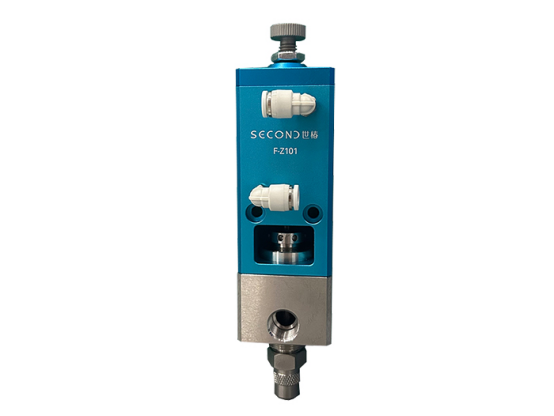Common Issues & Troubleshooting Tips for Epoxy Glue Dispensing Machines
In modern industrial production, epoxy glue dispensing machines are widely used in electronics, electrical appliances, machinery manufacturing and many other fields due to their precise and efficient dispensing performance. However, even equipment with excellent performance will inevitably encounter various problems during long-term use. Understanding the common problems of epoxy automatic glue dispensing machine and mastering effective troubleshooting techniques are crucial to ensuring smooth production and extending the service life of equipment.
Automatic In-line PCB Glue Dispensing Machine SEC-DH400L
Second Intelligent In-line Glue Dispensing Machine SEC-DH400L adopts an integrated mineral casting design, with ultra-high precision and super stability, powerful expansion capabilities, and can realize ion cleaning, dispensing, detection, UV exposure and other functions;
Adopting a gantry structure, it can bear large loads, stable structure, and a powerful CCD visual positioning system, which can meet the requirements of Mark point positioning, edge positioning, and 3D scanning positioning; strong scalability, and can expand AOI detection 3D detection, UV exposure curing and other functions;
Strong platform compatibility, contact and non-contact dispensing, single-head and multi-head synchronous dispensing, automatic compensation and adjustment of double-head spacing, five-axis dispensing function based on needle A/R displacement, etc.
1.Uneven glue quantity
(I) Manifestation
When dispensing glue, there is too much or too little glue, and the glue dots are of different sizes and unevenly distributed, which seriously affects the product quality and dispensing effect.
(II) Possible causes
1.Glue needle problem: needle wear, blockage or inappropriate model are common factors. The inner diameter of the worn needle becomes larger, and the glue output is difficult to accurately control; the blocked needle will cause the glue to flow out unsmoothly, resulting in unstable glue quantity; if the needle model does not match the glue viscosity and dispensing requirements, it will also cause uneven glue quantity. For example, when using a needle that is too thin to dispense high-viscosity epoxy glue, the flow of the glue is blocked, and it is easy to break the glue or the glue quantity is insufficient.
2.Glue valve failure: The glue valve cannot be closed or the opening is unstable, which will cause continuous dripping of the glue or intermittent glue discharge abnormalities. This may be due to aging or damage of the glue valve seal, or failure of the glue valve drive device, which cannot accurately adjust the opening and closing degree of the glue valve.
3.Unstable air pressure: Epoxy glue dispensing machines mostly rely on air pressure to push the glue liquid out. When the air pressure supply is unstable and fluctuates greatly, the amount of glue output will change with the change of air pressure, resulting in uneven glue amount. If the factory air source pressure is insufficient, or there is air leakage in the pressure regulating valve, air pipe and other components of the dispensing machine, it will affect the stability of the air pressure.
4.Changes in glue properties: The viscosity, fluidity and other properties of epoxy glue are affected by temperature, stirring conditions and storage time. If the glue is left for too long, the viscosity increases, it is not fully stirred, and the internal components are uneven, there will be differences in the amount of glue when dispensing; if the ambient temperature is too low, the glue becomes thicker, which may also lead to poor glue output and less glue.
smt automatic glue dispenser automation SEC-DH600L
(III) Solutions
- Check and replace needles: Check the wear of needles regularly and replace them in time if the wear is serious. For clogged needles, use appropriate solvents such as acetone to clean them, but be sure to dry them thoroughly after cleaning to prevent solvent residues from contaminating the glue. According to the viscosity of the glue and the requirements for dispensing, select the appropriate needle model to ensure that the glue can flow out smoothly and stably.
- Repair or replace the glue valve: disassemble the glue valve and check the seals. If aging or damage is found, replace the seals of the same specification immediately; debug and repair the glue valve drive device to ensure that it can accurately respond to the control signal, stably adjust the opening and closing of the glue valve, and ensure the accuracy of the glue output.
- Stabilize the air pressure system: Install an air pressure stabilizer to stabilize the air pressure within the range required by the equipment and reduce air pressure fluctuations; regularly check the air pipes, joints and other components, and repair or replace the leaking parts in time; ensure that the factory air source pressure is sufficient to meet the needs of continuous and stable operation of the dispensing machine.
- Optimize the use and management of glue: follow the recommendations of the glue manufacturer, control the storage conditions of the glue, and avoid long-term high or low temperature storage; fully stir the glue before use to make its composition uniform; adjust the viscosity of the glue appropriately according to the ambient temperature, and preheat the glue or add diluent if necessary, but pay attention to the precise ratio to prevent affecting the curing performance of the glue.
2.Dispensing position deviation problem
(I) Manifestation
During dispensing, the glue dots do not fall accurately at the preset position, and there is an offset, resulting in poor product bonding, packaging and other effects, and may even affect subsequent production processes.
(II) Possible causes
- Mechanical transmission error: The X, Y, and Z axis transmission components of the dispensing machine, such as screws, guide rails, belts, etc., may wear and loosen after long-term use, resulting in reduced motion accuracy and deviation in the dispensing position. For example, if the screw nut pair is worn, the nut will move inaccurately when the screw rotates, which will drive the dispensing head to deviate from the predetermined trajectory.
- Programming parameter errors: The coordinate settings, movement speed, acceleration and other parameters in the dispensing program are unreasonable or erroneous, which will cause the dispensing head to move along the wrong path. For example, after changing the product model or adjusting the dispensing plan, if the corresponding parameters are not modified in a timely and accurate manner, it is easy to cause dispensing position deviation.
- Inaccurate positioning of the workpiece: The workpiece being glued is not fixed properly on the workbench, the positioning fixture is worn or deformed, or there is an error in the processing size of the workpiece itself, causing the workpiece to move during the glue dispensing process, resulting in the glue dispensing position not being consistent with the design.
- Visual recognition failure (if there is a visual system): Some high-end epoxy glue dispensing machines are equipped with a visual positioning function. When the visual camera is dirty or damaged, or the visual recognition software algorithm is wrong, it cannot accurately identify the position and features of the workpiece, and guides the glue dispensing head to dispense glue incorrectly.
(III) Solution
1.Repair mechanical transmission components: Regularly inspect and maintain the transmission components of the glue dispensing machine, tighten loose screws and nuts, replace worn screws, guide rails, belts, etc.; perform precision inspections on key transmission components. If any exceeds the allowable error range, repair or replace them in time to ensure the accuracy and stability of the mechanical transmission system.
2.Check and correct programming parameters: Before each dispensing task, carefully check the parameter settings in the dispensing program, combine the product drawings and process requirements, and ensure that the coordinates, speed, acceleration and other parameters are accurate; in case of product changes or process adjustments, rewrite and debug the program in strict accordance with the new requirements, and conduct trial operation verification to ensure the accuracy of the dispensing position.
3.Optimize the workpiece positioning method: According to the shape and size characteristics of the workpiece, design a reasonable positioning fixture to ensure that the workpiece is firmly fixed on the workbench and has high positioning accuracy; regularly check and repair the wear and deformation of the positioning fixture; for the case of large errors in the processing size of the workpiece, you can increase the incoming material inspection link, remove unqualified products, or communicate with the previous processing steps to improve the consistency of the workpiece.
4.Maintain the visual system (if any): Clean the visual camera lens regularly to keep the field of view clear; check the running status of the visual recognition software. If you find algorithm errors, recognition anomalies, etc., contact the software supplier or professional technicians in time for repair and upgrade; regularly calibrate the visual system to ensure its positioning accuracy and provide reliable position guidance for the dispensing machine.
Pneumatic stainless steel Needle glue dispensing Valve F-Z101
3.Glue valve dripping problem
(I) Manifestation
After the dispensing is completed, there is still glue dripping from the glue valve, which not only wastes glue, but also may contaminate the work area, products and other parts of the equipment, affecting the normal operation of the production environment and equipment.
(II) Possible causes
1.The glue valve is not closed tightly: As mentioned above, the seal of the glue valve is damaged or aged, or the internal structural parts of the glue valve are worn or deformed, resulting in the inability to completely close the glue valve, resulting in dripping. In addition, the failure of the glue valve drive device causes the glue valve to close incompletely, which can also cause dripping.
2.Influence of glue characteristics: Some epoxy smt glue dispenser machine have lower viscosity, faster curing speed or higher fluidity. At the moment the glue valve is closed, the glue remaining in the glue valve channel is likely to continue to flow out due to its own characteristics, causing dripping. For example, quick-drying epoxy glue cures quickly at room temperature. If the glue valve is not closed in time, it is very easy to drip.
3.Residual air pressure: When dispensing is finished, the air pressure balance between the glue valve and the glue container is destroyed, and a high air pressure still remains in the pipeline, squeezing the glue out of the glue valve and causing dripping. This is usually caused by poor exhaust of the pressure regulating valve and unreasonable design of the air pipe circuit.
(III) Solution
1.Repair or replace the glue dispensing Valve assembly: disassemble and inspect the glue valve, replace damaged seals, repair or replace worn and deformed internal structural parts; conduct a comprehensive inspection of the glue valve drive device, debug its electrical control system, and ensure that the drive device can push the glue valve to close normally and forcefully to eliminate the hidden danger of dripping.
2.Adjust the glue or process: For glue that is prone to dripping, the glue formula can be appropriately adjusted to increase viscosity and slow down the curing speed, but other performance indicators of the glue must be taken into account; or optimize the dispensing process, such as reducing the air pressure in advance before the end of dispensing, reducing the glue pressure when the glue valve is closed, and avoiding dripping.
3.Optimize the air pressure system: Check the exhaust function of the pressure regulating valve to ensure that it can discharge the excess air pressure in the pipeline in time; reasonably design the air pipe circuit, add exhaust devices, such as air control valves, mufflers, etc., to achieve stable pressure reduction at the end of dispensing, maintain the air pressure balance between the glue valve and the glue container, and prevent dripping.
Second Intelligent has played an important role in theresearch, development, manufacturing, pre-sales and after-sales services of fluid dispensing robot, potting and coating solutions which range from various types of automatic fluid dispensing, potting, two-component potting machines and coating machines with desktop, free-standing, inline or cobot combined systems, and widely used in global electrical, electronics, home appliances, automobile, telecom, pharmaceutical, automotive electronics, semiconductor, aerospace, LED and more.




